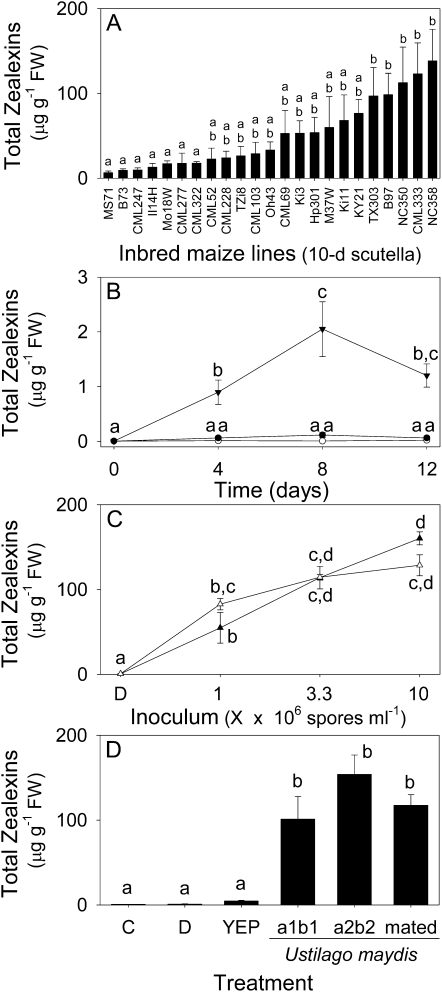Figure 8.
Zealexins are ubiquitous in maize and inducible in stems by insect herbivory, mycotoxigenic fungi, and nontoxigenic fungi. A, Average (n = 4, ±sem) total zealexins, arranged from low to high, in the scutella of 10-d-old maize seedlings from 23 diverse inbred maize lines. B, Time course of average total zealexin (n = 3, ±sem) accumulation in maize stems following no treatment (○), damage (•) or damage + O. nubilalis herbivory (▾). C, Average (n = 4, ±sem) total zealexins in maize stems 48 h after the plants were damaged and treated with either water (D) or water containing mycotoxigenic A. flavus (△) and nonmycotoxigenic A. sojae (▲) at a range of inoculum levels. D, Average (n = 4, ±sem) total zealexins in maize stems 48 h after either no treatment (C) or damage plus either water (D), YEP, or U. maydis: a1b1 a2b2, or mated, each at final concentration of 1 × 106 cells mL−1 in YEP. Within plots, different letters (a–d) represent significant differences (ANOVA P value < 0.001; Tukey test corrections for multiple comparisons: P < 0.05).

